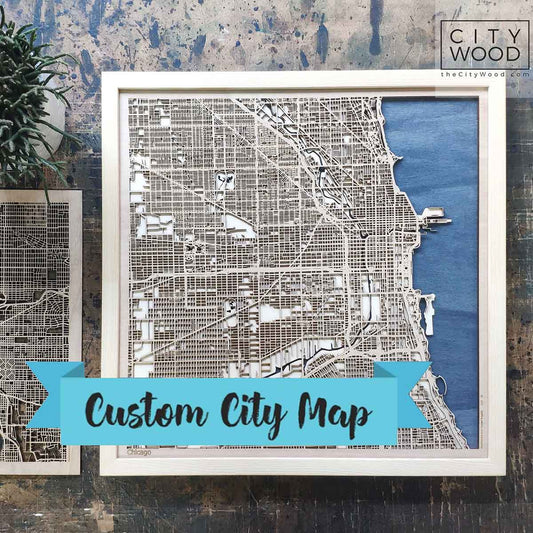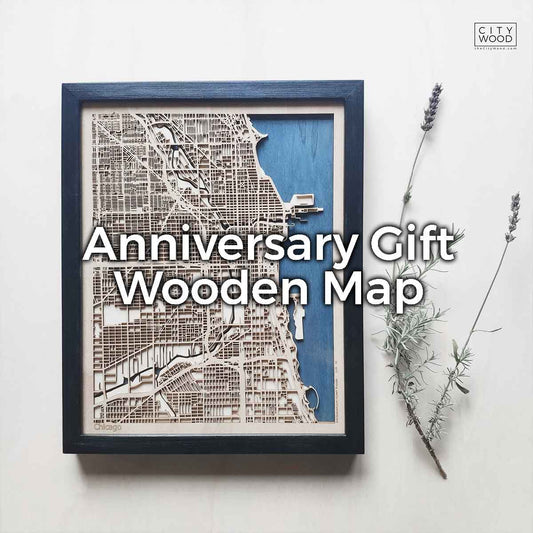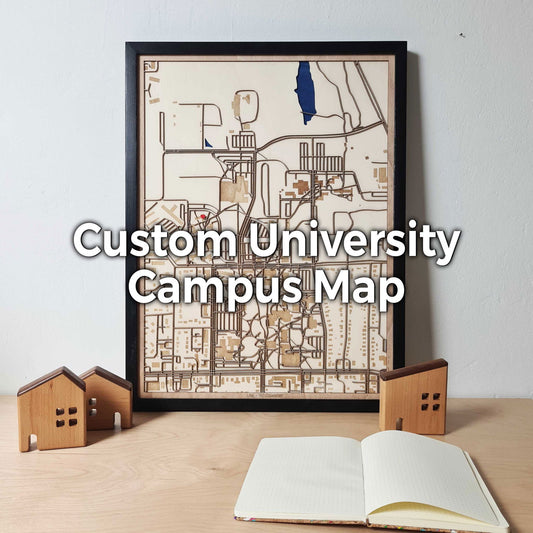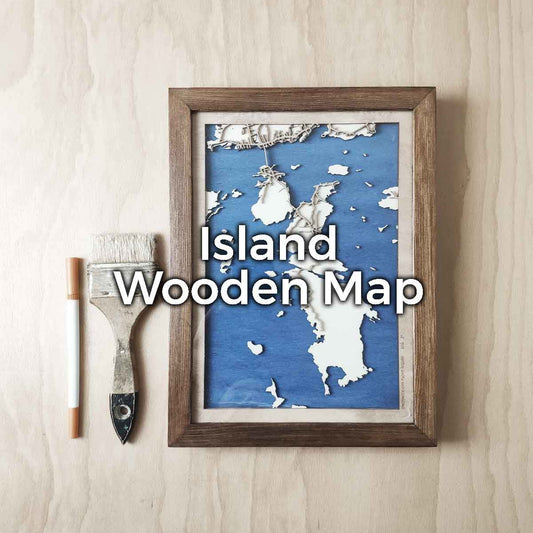Laser cut wood maps have gained popularity in recent years, offering a unique way to display one's appreciation for geography, art, and technology.
These intricate and visually stunning pieces capture the essence of our planet's topography, making them an ideal addition to homes, offices, or as gifts for loved ones.
Laser cut wood maps are part of the expanding trend of using laser cutting technology across various industries, including art and design.
Historically, cartography has been a vital aspect of human civilization, aiding us in navigation and understanding the world around us.
"Laser cutting technology has revolutionized the way artists and designers create maps, adding a new level of detail and complexity," says Hubert Roguski, a cartographer and artist.

The adoption of laser cutting in mapmaking has led to increased precision and detail, enabling artists to craft beautiful and accurate representations of our world.
"Laser cut wood maps offer a unique combination of craftsmanship and technology, resulting in a truly one-of-a-kind piece," explains Roguski.
The rising popularity of these maps has resulted in a surge of small businesses and artists specializing in creating custom pieces for clients, demonstrating a broad range of styles and techniques.
For instance, CityWood, founded by Hubert Roguski, provides minimalist city maps using layers of laser-cut wood to create an eye-catching 3D representation of urban landscapes.
The influence of laser cut wood maps on the field of cartography and art is apparent.
These maps have not only garnered the attention of geography aficionados but have also gained traction among interior designers and art collectors.
As technology advances and refines, laser cut wood maps are anticipated to become more intricate and diverse in their design.
This potential could inspire a new wave of artists, designers, and map enthusiasts to delve into the world of cartography through an artistic perspective.
The popularity of laser cut wood maps also signifies a broader societal shift towards the appreciation and celebration of craftsmanship and the fusion of technology and art.
Consequently, these maps have become an essential element in the realms of modern cartography, design, and aesthetics.

The History of Cartography and Laser Cutting Technology
To fully appreciate the significance of laser cut wood maps, it is essential to understand the historical context of cartography and the development of laser cutting technology.
Cartography dates back to ancient civilizations, where maps were drawn on clay tablets, papyrus, or carved into stone.
Throughout history, cartographers have utilized various tools and techniques to create increasingly accurate and detailed maps.
Laser cutting technology, on the other hand, was developed in the 1960s and has since transformed numerous industries, including manufacturing, fashion, and art.
The precision and versatility of laser cutting make it an ideal tool for creating intricate designs, such as the detailed topography of laser cut wood maps.
The Process of Creating Laser Cut Wood Maps
The creation of laser cut wood maps involves several steps, starting with the selection of a geographical area or region.
Next, the artist obtains accurate topographical data from sources such as satellite imagery, geological surveys, or open-source geographic information systems (GIS).
The data is then processed using specialized software, which translates the information into a format compatible with laser cutting machines.
Each layer of the map is designed to represent different elevations or features, creating a three-dimensional effect when assembled.
After the design is finalized, the artist selects the appropriate wood material, considering factors such as thickness, color, and grain.
The laser cutting machine then etches and cuts the wood with remarkable precision, resulting in clean lines and intricate details.
Finally, the artist assembles the layers and finishes the map with a protective coating, ensuring the piece's longevity and visual appeal.
Some artists may also choose to add color, lighting, or additional embellishments to enhance the map's aesthetic value.

The Impact of Laser Cut Wood Maps on Art and Design
The fusion of laser cutting technology and cartography has had a profound effect on the worlds of art and design.
The precision and versatility of laser cut wood maps have expanded the possibilities for artists, providing new avenues for creativity and expression.
"Laser cut wood maps have pushed the boundaries of traditional cartography, incorporating artistic elements that make these pieces not only informative but also visually captivating," says Hubert Roguski.
As a result, laser cut wood maps have inspired numerous artists and designers to explore the intersection of technology, cartography, and art, leading to a surge in innovative and unique creations.
Environmental Considerations and Sustainable Practices
In today's world, sustainability and environmental consciousness are essential considerations for both consumers and creators.
Recognizing this, many artists and businesses specializing in laser cut wood maps have adopted eco-friendly practices to minimize their environmental impact.
These practices may include using sustainably sourced wood materials, repurposing offcuts, and implementing energy-efficient laser cutting machines.
By embracing sustainable methods, the laser cut wood map industry can continue to thrive while reducing its environmental footprint.
Laser Cut Wood Maps as Educational Tools
Beyond their aesthetic appeal, laser cut wood maps can serve as valuable educational tools, helping individuals of all ages develop a deeper understanding of geography, topography, and spatial relationships.
For example, schools and educational institutions may use laser cut wood maps to engage students in interactive learning experiences, fostering a greater appreciation for the world around them.
In addition, these maps can be valuable resources for researchers, urban planners, and environmental scientists, providing detailed, accurate, and visually engaging representations of specific geographical areas.

The Future of Laser Cut Wood Maps
As technology continues to advance, it is likely that laser cut wood maps will evolve and become even more intricate and diverse in their design.
This may involve the incorporation of new materials, innovative techniques, and even interactivity, allowing users to engage with the maps in novel ways.
As laser cutting technology becomes increasingly accessible and cost-effective, it is anticipated that more artists and designers will be drawn to the field. This influx of talent will likely lead to a more diverse array of styles, methodologies, and inventive applications of cartography in the realm of laser cut wood maps.




